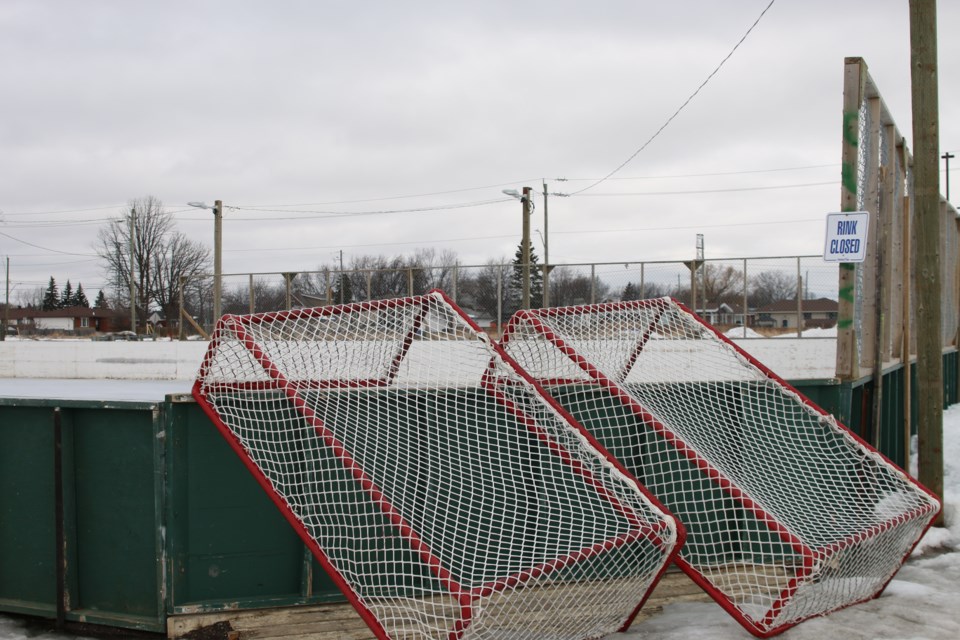THUNDER BAY — The city's approach to outdoor rinks could be changing as climate change makes winters shorter, warmer and less predictable.
Council and administration now have a lot more information to work with when considering any potential options to improve city-owned skating rinks.
On Monday, city staff presented a detailed report requested by Coun. Greg Johnsen last year about options to make local rinks more resilient to warmer winters. Johnsen said his concerns are twofold: he said rinks are often in danger of being “downgraded” (like having boards permanently removed, rendering them more of a pond) due to lower usage, and our warmer winters making many skating seasons shorter.
“Last year for example, I think we went through three melts over the winter season and then (that) really kneecaps, if you will, the whole outdoor rinks season,” he said.
“Also … it didn't sit well with me that we consistently seem to be downgrading or looking at who's using it, why aren't they using it (and) ‘we'll move it away from this area’ so I was looking for some solutions, really.”
Administration’s report, which took the better part of a year to compile examined five potential options to allow any local rink to better stand up to a warm spell in winter. They included synthetic rinks, refrigerated rinks, building an open-air cover over an ice surface, laying concrete pads that can be flooded for ice skating or cleared for inline skating, and clustering multiple rinks with amenities, like a rink attendant, in hubs.
Johnsen said he’s also concerned about how the city measures rink usage, which ultimately leads to decisions on which facilities to maintain at which service levels. He said it’s done through a single annual roughly-three-week long survey.
“I had conversations with parks administration about … is there an opportunity to have city workers kind of assess who's on the rinks — is management able to get out there?” he said.
“How better can we put eyes to see actually who is on the rinks.”
Administration’s report examined the five options and detailed exactly what each would entail, as well as identifying benefits and drawbacks, expected costs, expected lifespans, feasibility and how they would improve service levels.
“It did take almost a year — a good 10 months — but I was happy that the report came back as fullsome as it was,” Johnsen said.
“I think the parks department did a really good job in gathering this information (that) to my knowledge, information that they never had before,” he continued. “To my knowledge, the parks department had not done research on synthetic rinks, or had not done research on concrete pads for rinks, so I was happy to do something that they hadn't really had a chance to do yet.”
The report was received for information on Monday. In it, administration said there currently is no dedicated city budget for adding infrastructure to extend the outdoor rink season.
“This information will help to guide capital and operating budget considerations for the winter outdoor rink program, as well as the development of the updated recreation, parks, and facilities master plan as part of the city manager’s work plan,” Werner Schwar, Thunder Bay’s supervisor of parks and open space planning, wrote in the report.
Johnsen said this is an issue he will continue to stay on top of.
“I think there needs to be a further conversation when the survey topic comes from parks about what to do for next season,” he said. “I think this will be still resonating and be a big part of that conversation.”
“I don't plan to just simply let it go.”
